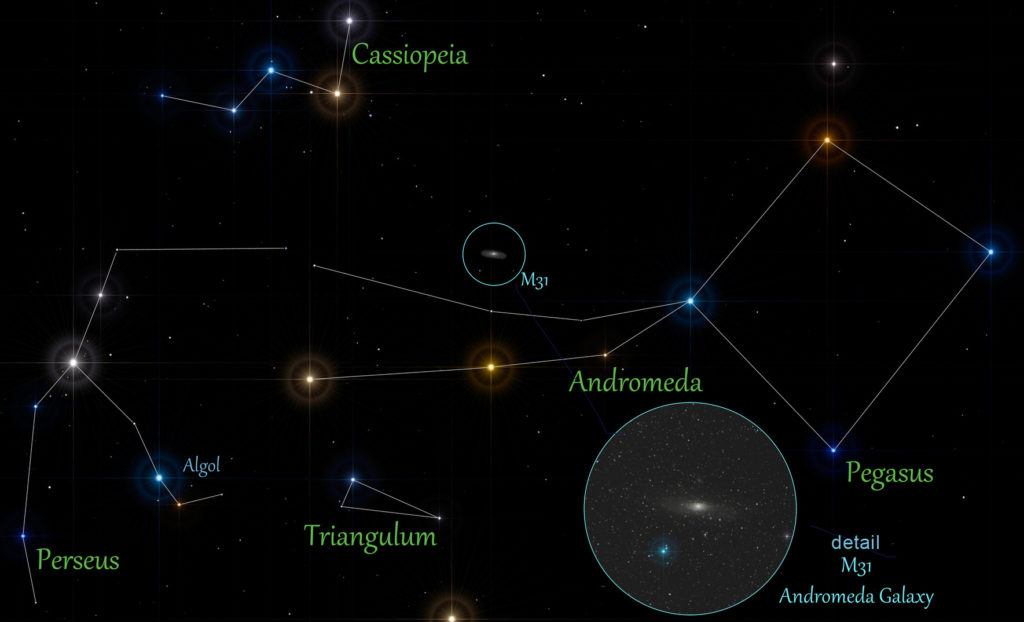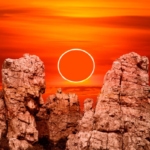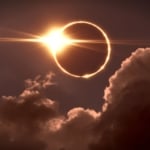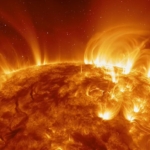Pegasus Points The Way To A Famous Galaxy
This month, let the flying horse lead you to the Great Andromeda Galaxy!
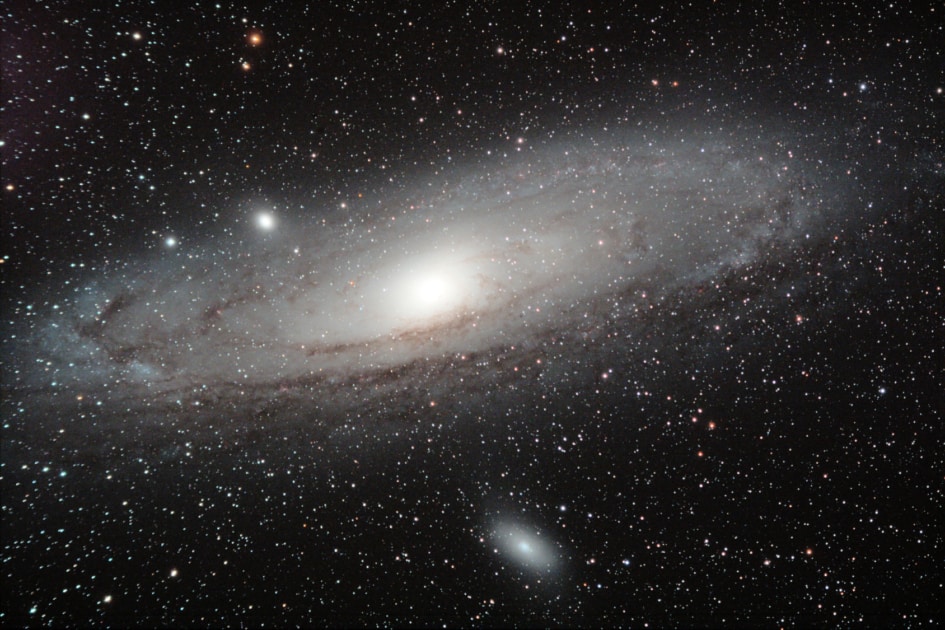
High overhead during the November early evening hours is a star configuration that people unfamiliar with the sky often mistake for the Big Dipper. Big it is, but a dipper it is not. The bowl is composed of the four stars of the Great Square of Pegasus, the Flying Horse. The handle is composed of four bright stars belonging to the constellations Andromeda and Perseus. Pegasus actually supplies only three stars of the Great Square: Markab, Scheat and Algenib.
The fourth is Alpheratz, the alpha, or brightest, star of Andromeda. In the handle, Alpheratz, Mirach and Almach, are almost evenly spaced toward the northeast and are the brightest stars in Andromeda. The next bright star extending along the same line, Mirfak, is the alpha star of Perseus. Probably the most renowned feature of this part of the sky is the Great Andromeda Galaxy.
The Chained Princess
In the year 964 AD, the Persian astronomer al-Sūfī drew attention to a “Little Cloud” located among the stars of the constellation Andromeda, the Chained Princess. Simon Marius is usually credited with the first telescopic observation of this object around the year 1612. Even today, binoculars and telescopes reveal that “cloud” as little more than an elongated fuzzy patch, which gradually brightens in the center to a star-like nucleus. There is a reason that this patch of light appears so faint and tired looking. When you see it tonight, consider that this light has been traveling some 2,500,000 years to reach you, traveling all that time at the tremendous velocity of 671 million miles per hour.
How Old?
The light you are seeing right now, is around 25,000 centuries old and began its journey around the time of the dawn of human consciousness. When it began its nearly 15-quintillion-mile journey earthward, mastodons and saber-toothed tigers roamed over much of pre-ice-age North America and prehistoric man struggled for existence in what is now the Olduvai Gorge of East Africa. The light from that “little cloud” is actually a galaxy: the total accumulation of light (based on observations from the Spitzer Space Telescope) from one trillion stars. It is also listed as Messier 31, in Charles Messier’s famous catalogue: hazy objects resembling comets, but later proved to be galaxies, nebulae and star clusters.
In his autobiography, In Joy Still Felt, Isaac Asimov described when he and his wife Janet signed on for an astronomy-themed cruise. “It was a beautiful mild night and the sky was more splendid than a planetarium dome could have been. Janet used her binoculars to look at the objects described, and the high point came when we saw the Andromeda Galaxy for the first time. If the cruise had ended at that point, we would have had our money’s worth.”
Incidentally, “quintillion” is defined as the number one, followed by 18 zeros. So, the distance to the Andromeda Galaxy can also be written as “. . . nearly 15,000,000,000,000,000,000 miles.” If you don’t like quintillion, you could also say, “. . . nearly 15 thousand quadrillion miles.” Same number of zeros, but just a different type of nomenclature.
But no matter how you write it, that’s still a long ways away!
How to see it: Look to the east after nightfall. Use the chart above to help you locate it. You’ll need as dark a sky as possible.

Joe Rao
Joe Rao is an esteemed astronomer who writes for Space.com, Sky & Telescope, and Natural History Magazine. Mr. Rao is a regular contributor to the Farmers' Almanac and serves as an associate lecturer for the Hayden Planetarium in New York City.

